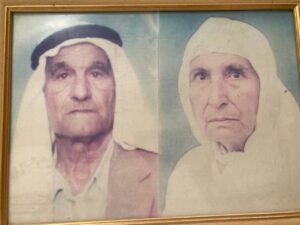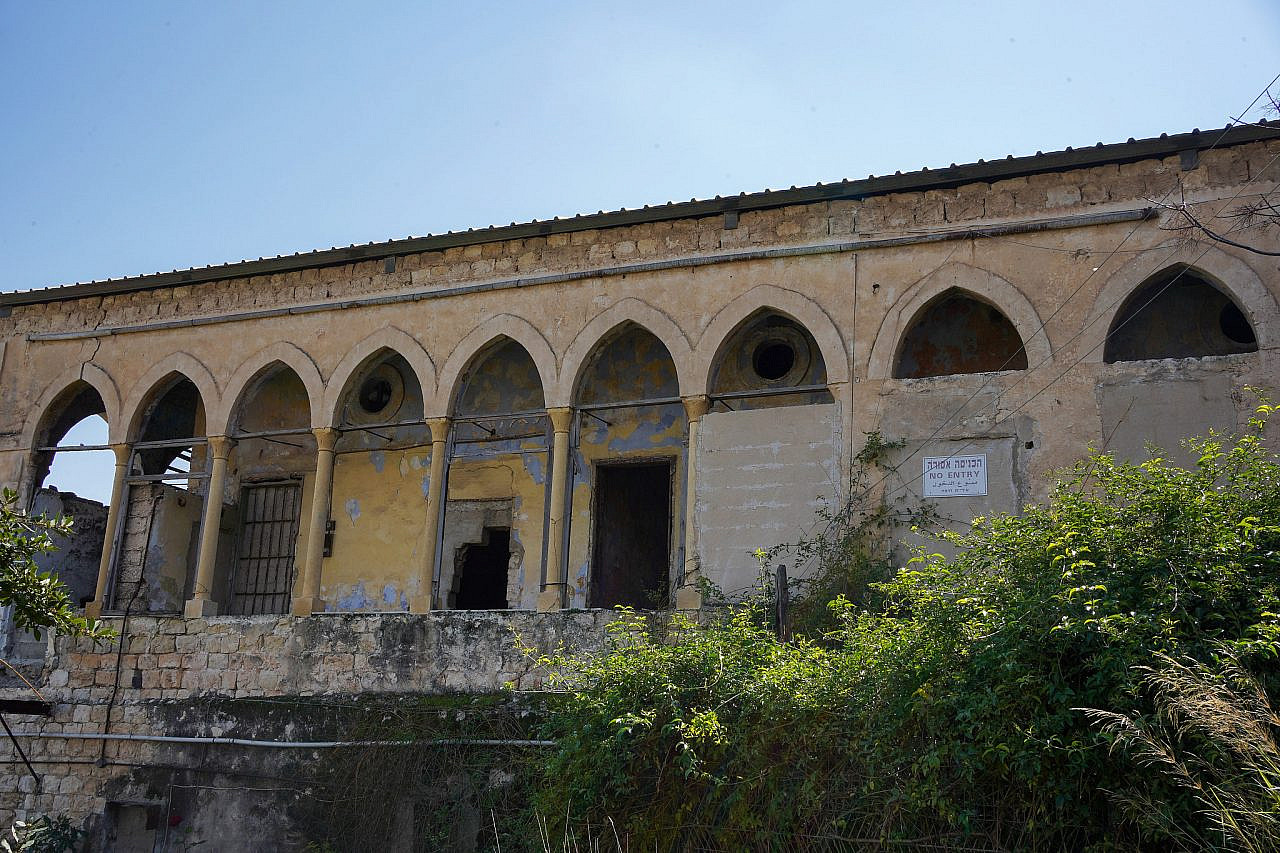This is the first in a two-part series by +972 editor Vera Sajrawi retracing her family’s Nakba stories.
Invisibility is a painful human experience. My family is living proof. When Zionist militias captured 78 percent of historic Palestine in 1948, expelling about 750,000 Palestinians from what became the State of Israel, my maternal and paternal grandparents briefly fled to Lebanon for refuge. They eventually snuck back in, living the rest of their lives as “present absentees” — Israel’s term for internally displaced persons (IDPs) — in their own homeland. They became unseen by the state, its laws, and its new settler society.
This kind of invisibility casts a heavy shadow that follows Palestinians wherever they go. It is, as the scholar Brené Brown describes, a “function of disconnection and dehumanization where an individual or a group’s humanity and relevance are unacknowledged, ignored, and/or diminished in value or importance.” As a third-generation displaced Palestinian, living in a state established by the enemy who expelled us in the first place, I experience this process both at home and abroad — the stereotyping, the dehumanization, the condescension.
That invisibility is even heavier for Palestinians who could not and still cannot come back to their homeland, especially those in refugee camps in Gaza, the West Bank, and surrounding Arab countries. Always yearning to return, wondering what happened to their houses and belongings, aching at the thought of foreign settlers taking their place. Many of my extended family and close friends are in the diaspora, mainly in Jordan and the United States. For them, it never gets easier: the heartache, the longing, the curiosity to see, feel, smell, and touch the land from which their ancestors were expelled. But Israel makes it impossible for Palestinians to even visit. Whoever thought that the grandchildren of exiled refugees would forget the Nakba is a fool who doesn’t understand the human psyche, least of all that of Palestinians.
For as long as I can remember, I have aspired to right the wrong that was done to my beautiful family, on both of my parents’ sides, and to do so through writing. Maybe it started with my fascination with the books in my father’s library, or the fact that my maternal grandfather was a published writer. But as I grew older, witnessing the Second Intifada as a high schooler, the urge to tell the world the truth about what is happening in Palestine overcame me — especially after discovering, during a short trip to the United States, how little most Americans knew about us. Naively, I thought the world would be horrified to see the crimes Israel committed during the uprising; this time, I thought, unlike during the Nakba, the world would stand up and realize that their prolonged silence is killing us.
Now, 75 years after the Nakba began, I am writing these lines to do my part in making the Palestinian people, our stories, and our history visible to the world.
I recently discovered that Brown — who is one of my favorite writers — is, like me, a cartophile. In her stunning book “Atlas of the Heart,” she writes: “Maps are the most important documents in human history. They give us tools to store and exchange knowledge about space and place.” She also wrote that we humans are “meaning-makers,” but that this presupposes a “sense of place.” She explains: “We need landmarks to orient us, we need language to label what we are experiencing, and, just like a map, the interaction between the layers of our emotions and experiences tells our stories.”
I took her advice to heart. In late 2022, Zochrot — an NGO that raises awareness about the Nakba among Israeli society and advocates for Palestinian refugees’ right of return — launched its new app “iReturn,” an upgraded version of its earlier trilingual “iNakba” app first launched in 2014. The organization’s website states: “With the iReturn app, Zochrot aims to use technology to re-tell a suppressed history and reveal Israel’s hidden landscape of ethnic cleansing and forced expulsions. It gives users and beneficiaries a tool through which they could learn that history but also envision a just, viable, and peaceful solution to the ongoing crisis facing Palestinian refugees and internally displaced persons.”
I decided to use the app to trace my family’s uprooted history: from Haifa, where my maternal grandparents were expelled by boat along the Mediterranean Sea and where I live today, to the depopulated northern village of Al-Sajara, from which my paternal grandparents were chased and shot at by Zionist militias, via the dozens of depopulated villages along the way. With this journey, we bear witness to tens of thousands of heartbreaking stories — all so different but so similar in essence — to continue stripping away the invisibility of our Nakba.


